-
-
Services
Reservation Services
VIP Services
-
Business Travel
-
About Iran
History of Kashan, Aran & Bidgol, and Abyaneh
Kashan, one of Iran’s oldest cities, has a history that stretches back to ancient times, with archeological sites like the Sialk Hills revealing civilizations more than 7,000 years old. Aran & Bidgol, located nearby, was historically an important desert settlement along trade routes, while Abyaneh, a thousand-year-old village, is renowned for preserving its traditions, architecture, and cultural identity across centuries. Together, these destinations represent a rich blend of Persian history and heritage.
Cultural and Historical Attractions
Kashan is best known for its magnificent historic houses such as the Borujerdi, Tabatabaei, and Abbasi Houses, showcasing exquisite stucco work and paintings. The UNESCO-listed Fin Garden, the Agha Bozorg Mosque, and the traditional bazaar are also highlights. In Abyaneh, visitors can admire red-mud brick houses, the Jameh Mosque with its carved stucco mihrab, and ancient sites like the Harpaq Fire Temple. The Maranjab Caravanserai, built during the Safavid period, stands as a historic desert landmark in Aran & Bidgol.
Natural Surroundings and Tourism
The region offers unique natural beauty, from the golden dunes of the Maranjab Desert to the vast white plains of the Salt Lake in Aran & Bidgol. These landscapes are perfect for desert trekking, stargazing, and eco-tourism. Abyaneh, nestled in the mountains, charms visitors with its scenic views and traditional way of life. Together, Kashan, Aran & Bidgol, Maranjab, and Abyaneh provide a fascinating mix of history, architecture, and natural wonders, making them must-visit destinations in central Iran.
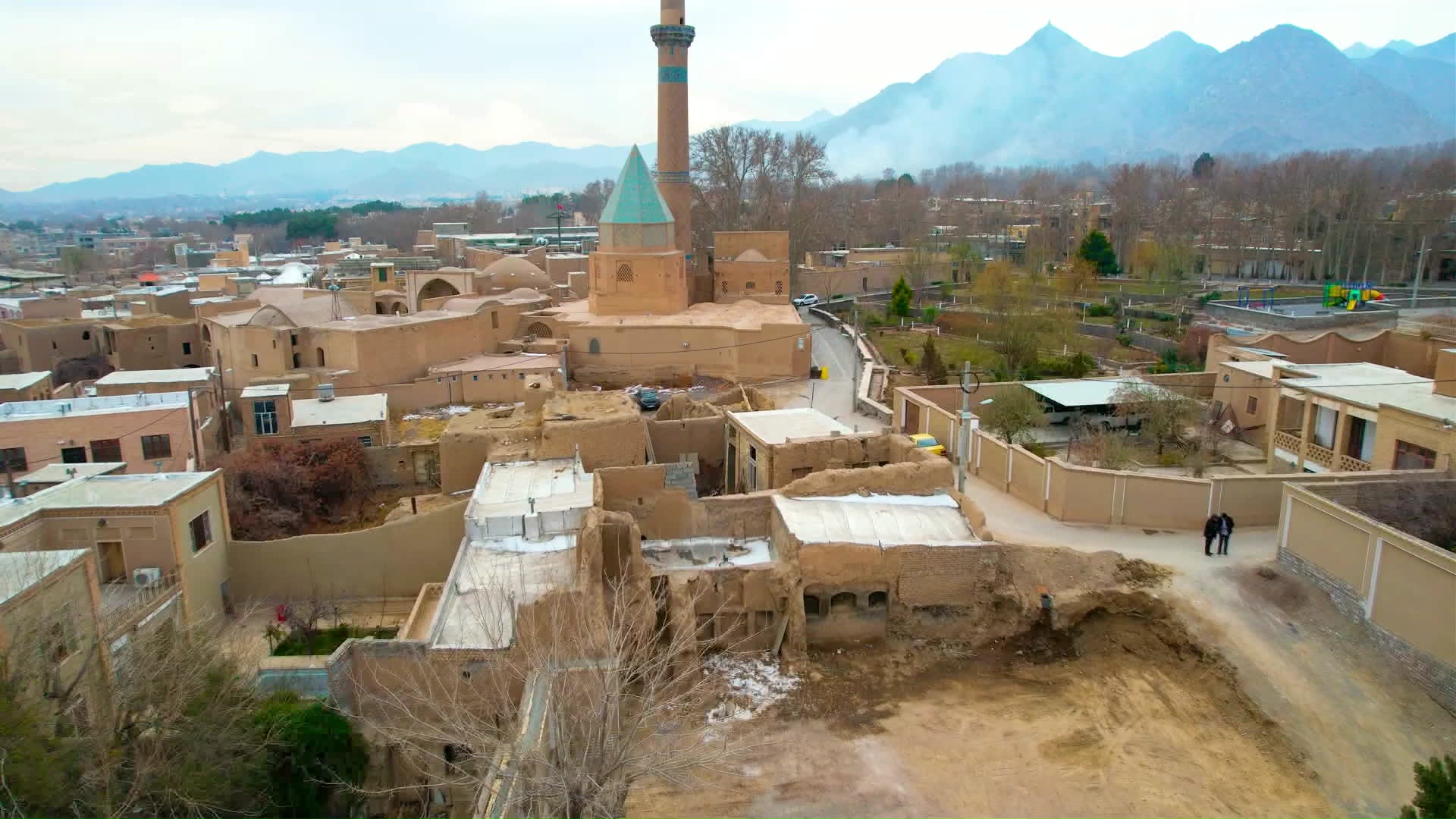
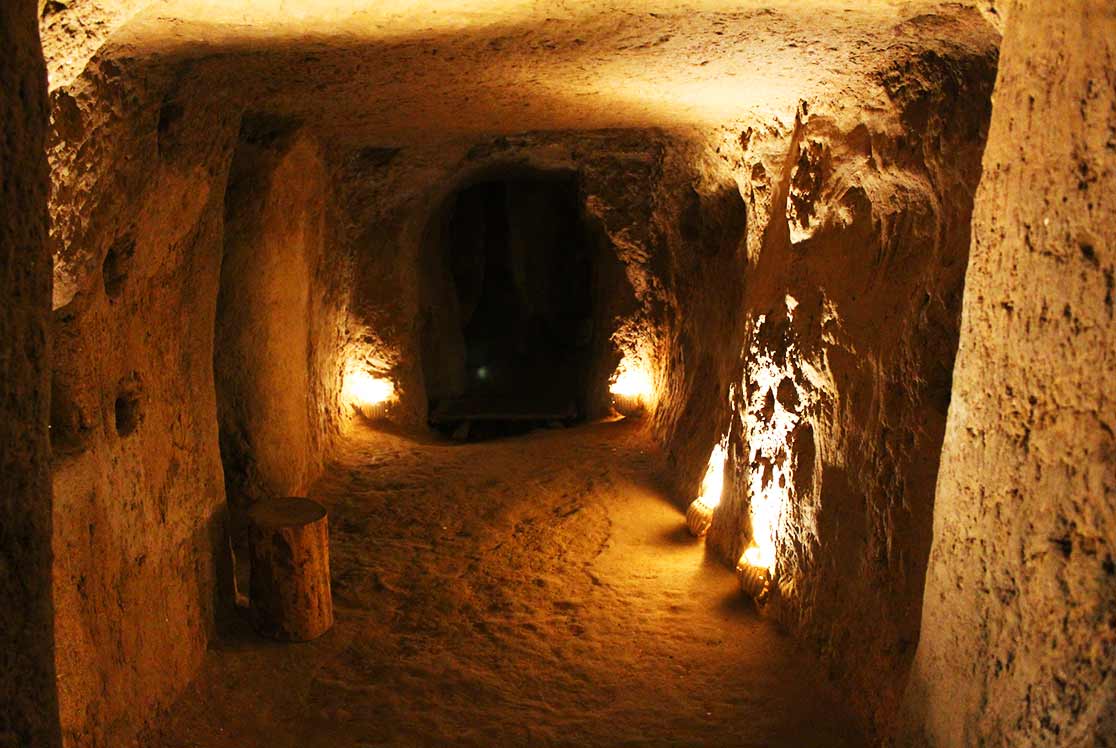

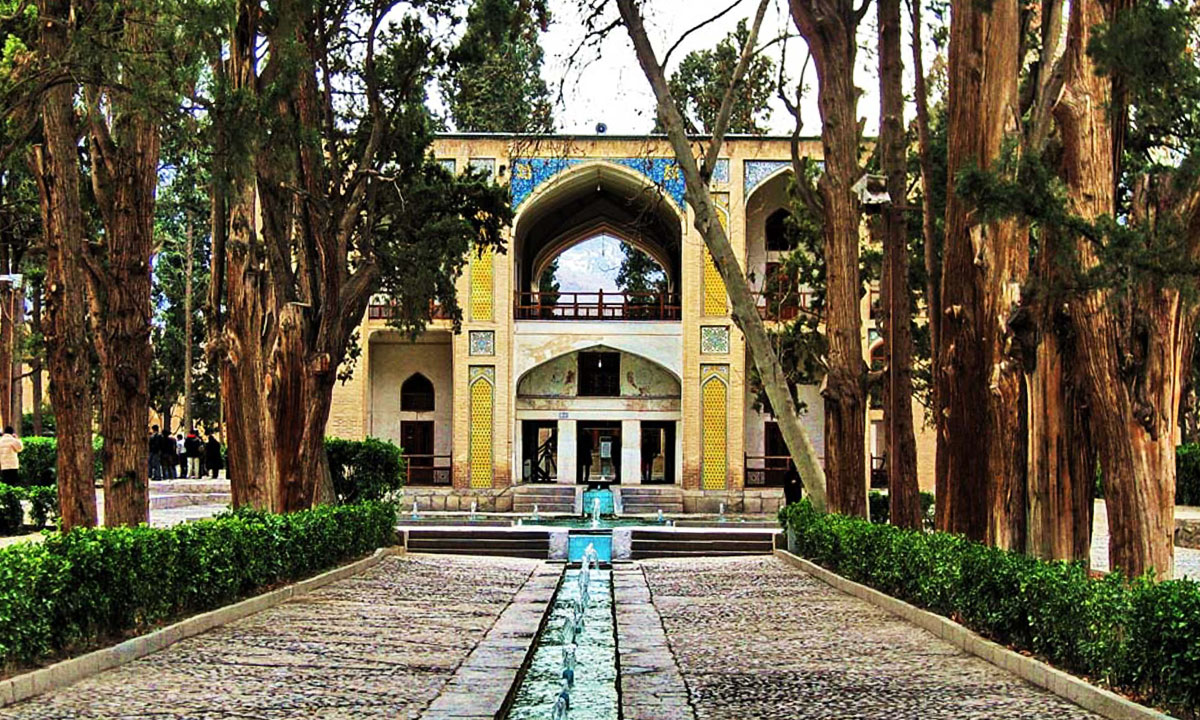
Fin Garden in Kashan is one of the most famous Persian gardens and a UNESCO World Heritage Site, representing the harmony of Iranian architecture and nature. Built during the Safavid era and later expanded in the Qajar period, the garden features flowing water supplied by ancient qanats, tall cypress trees, and elegant pavilions. It is historically significant as the site of the assassination of Amir Kabir, Iran’s reformist prime minister. With its combination of turquoise pools, traditional design, and lush greenery in the middle of the desert, Fin Garden stands as a masterpiece of Persian landscaping and a highlight for visitors to Kashan.

Tabatabaei House in Kashan is one of the finest examples of 19th-century Persian residential architecture, built during the Qajar era for a wealthy carpet merchant. The house is renowned for its elegant courtyards, intricate stucco work, stained glass windows, and beautifully painted walls that reflect the artistry of the time. With its traditional windcatchers (badgirs), underground chambers for cooling, and symmetrical design, the house showcases how Iranian architecture was adapted to desert climates. Today, it stands as a cultural jewel of Kashan, offering visitors a glimpse into the lifestyle and refinement of wealthy Persian families of the past.

Borujerdi House in Kashan is a masterpiece of Qajar-era architecture, built in the mid-19th century for the Borujerdi family, wealthy merchants of the time. The house is famous for its grand courtyard, soaring windcatchers (badgirs), and impressive reception hall adorned with intricate stucco, mirror work, and wall paintings by the renowned artist Kamal-ol-Molk. Its design combines both beauty and practicality, with underground spaces for cooling and elegant decorations that highlight Persian artistic traditions. Today, Borujerdi House is considered one of the most iconic historical residences in Kashan, reflecting the refinement and creativity of Iranian architecture.

Maranjab Desert, located near Aran & Bidgol close to Kashan, is one of Iran’s most popular desert destinations, admired for its golden sand dunes, salt plains, and stunning night skies. At the heart of the desert stands the Maranjab Caravanserai, a Safavid-era structure that once served as a resting place for travelers along the Silk Road. Visitors can explore unique landscapes such as the Salt Lake of Aran & Bidgol, shifting sand dunes, and tamarisk forests, making it an ideal spot for desert trekking and photography. The desert’s peaceful atmosphere and clear skies also make it a perfect destination for stargazing, offering an unforgettable experience of Iran’s natural beauty.
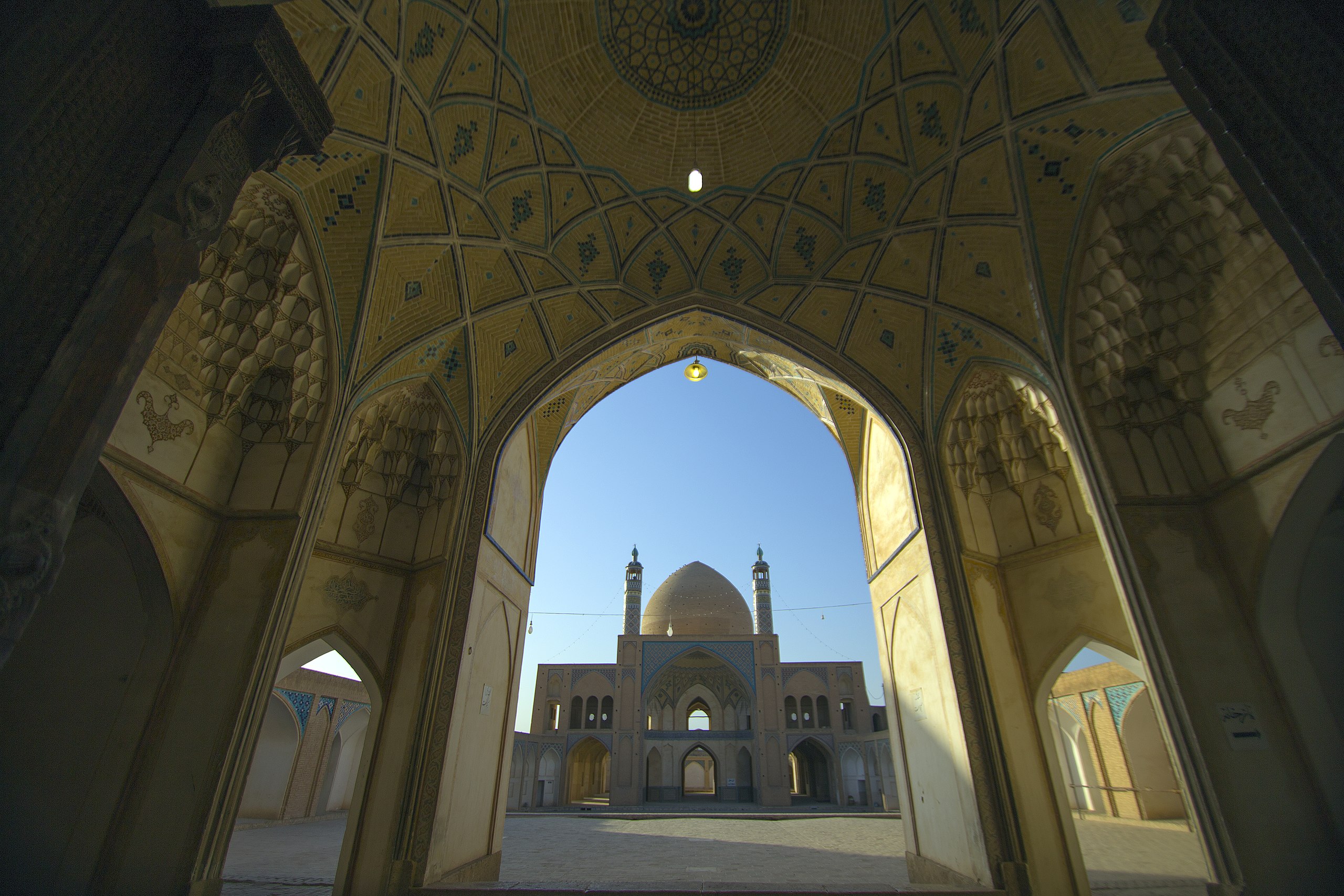
Agha Bozorg Mosque in Kashan is one of the most remarkable religious and architectural landmarks of the Qajar era. Built in the late 18th century, the mosque is admired for its symmetrical design, grand dome, and tall windcatchers that showcase traditional Persian architecture adapted to the desert climate. The complex includes both a mosque and a theological school (madrasah), with a central courtyard surrounded by arcades and chambers for students. Its brickwork, stucco decorations, and harmonious proportions make it a masterpiece of Iranian architecture. Today, Agha Bozorg Mosque is not only a place of worship but also a symbol of Kashan’s cultural and architectural heritage.

Nushabad, located near Kashan, is famous for its ancient underground city known as Ouyi (or Nooshabad Underground City). Dating back over 2,500 years, this subterranean network was designed to protect residents from invasions and harsh desert conditions. The complex includes tunnels, storage rooms, water wells, and ventilation shafts, showcasing the ingenuity of Persian engineering in desert environments. Visitors can explore parts of the underground city today, experiencing a unique glimpse into the defensive architecture and daily life of ancient inhabitants. Nushabad remains a fascinating historical and archaeological site, reflecting the resilience and creativity of past civilizations in central Iran.
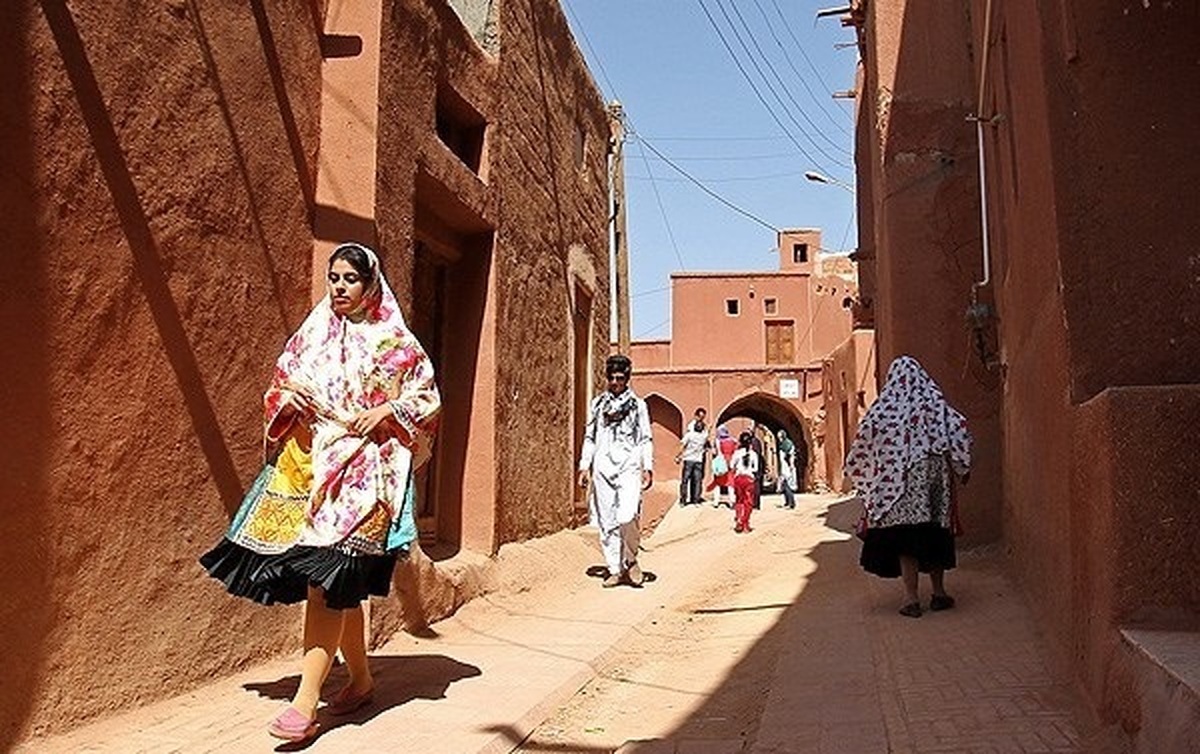
Abiyaneh is one of Iran’s most picturesque and historic villages, located in the Natanz region of Isfahan province. Famous for its red-roofed, adobe houses and narrow winding alleys, the village offers a unique glimpse into traditional Iranian architecture. Surrounded by mountains, Abiyaneh boasts a cool and pleasant climate, making it an ideal destination for nature lovers. The village is also known for its rich cultural heritage, including traditional clothing worn by local women, historic mosques, ancient castles, and old baths. With its combination of natural beauty, history, and culture, Abiyaneh attracts both domestic and international tourists seeking an authentic Iranian experience.

Natanz is a historic and scenic city in Isfahan Province, Iran, known for its beautiful mountainous landscapes and pleasant climate. Surrounded by orchards and gardens, it is especially stunning in spring when fruit trees are in full bloom. Natanz is rich in historical and cultural sites, including ancient mosques, traditional caravanserais, water reservoirs, and old fortresses that reflect its long history. Its proximity to the famous village of Abiyaneh and other natural attractions makes Natanz a popular destination for tourists seeking both cultural heritage and natural beauty. The city is also renowned for its agriculture, particularly fruit cultivation and medicinal plants, adding to its charm and local economy.
+989301903026
+982166126539
Info@Rosha.Travel
Saturday - Thursday 09 Am – 05 Pm
Iran, Tehran, End of Keshavarz Blvd, Corner of Ghajar Alley, North Jamalzadeh St, No. 528, Unit 4, 2nd Floor